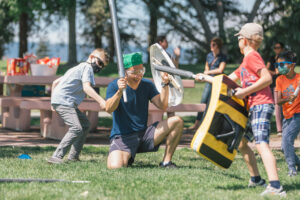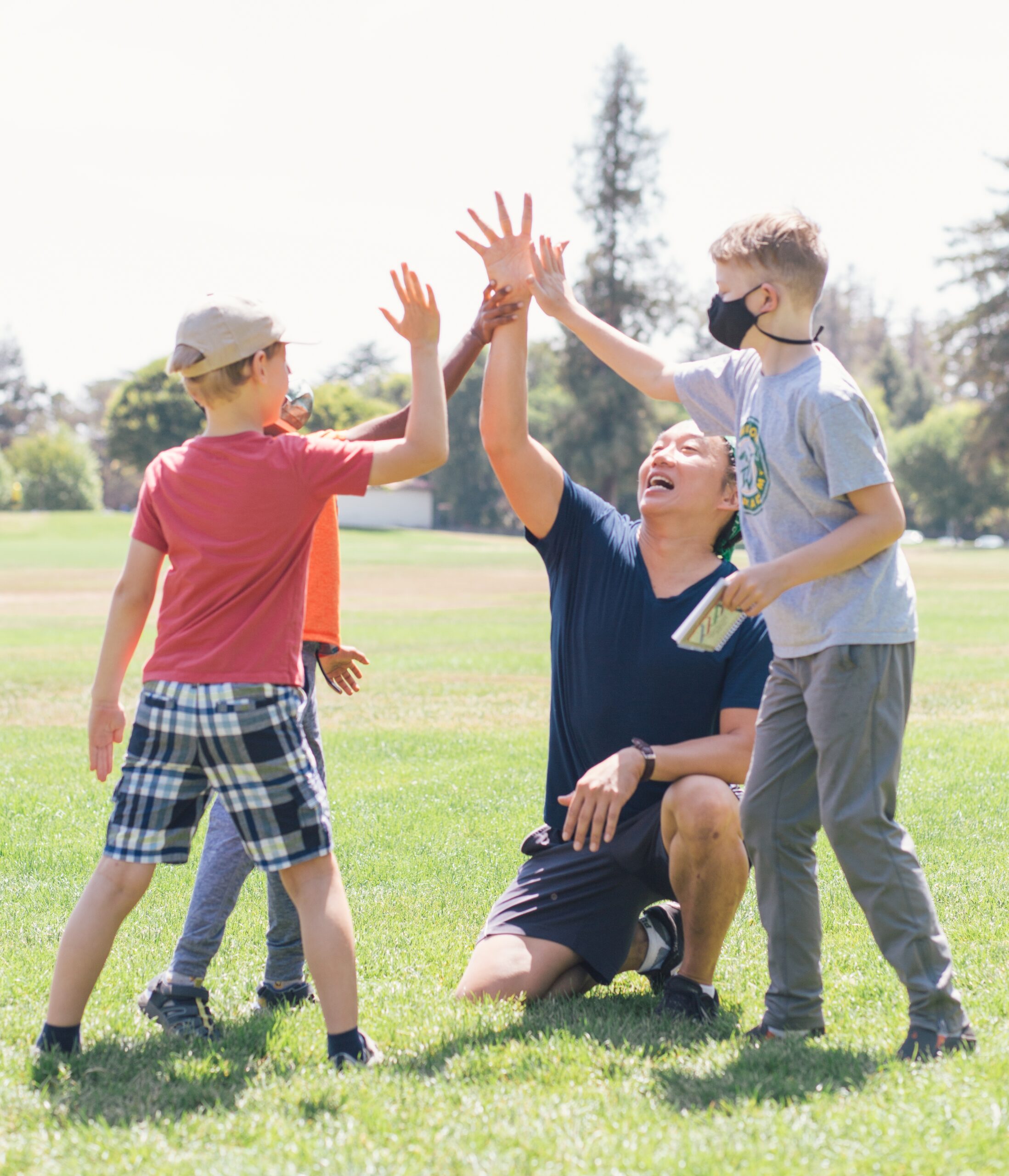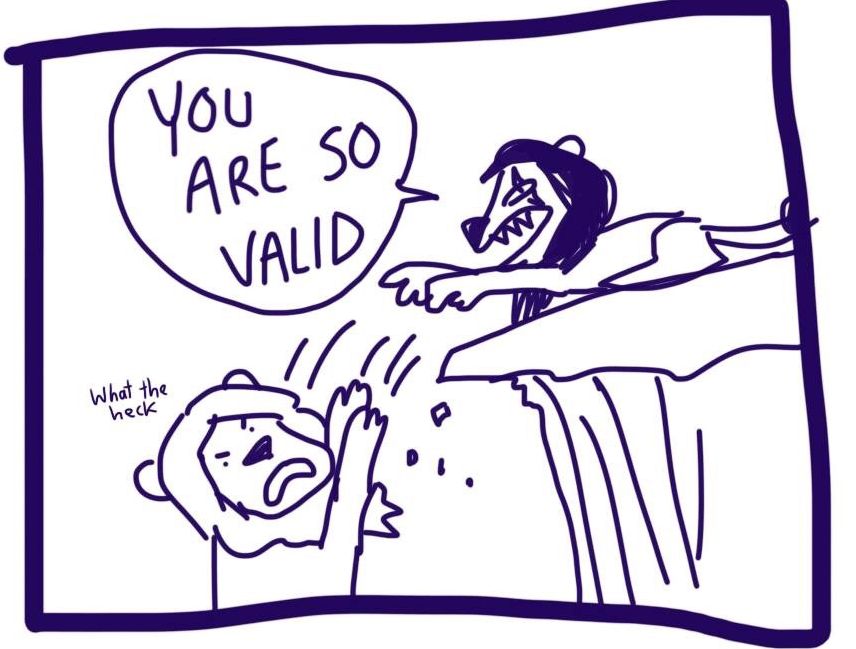People tend to have a preconceived notion of what it means to have an impact on the world. It could be leading a large company with hundreds or thousands of employees, creating a project to drill clean water wells in third world countries, or growing your Instagram or TikTok audience.
For me, when I was planning out the curriculum for my kids’ class centered around Social Emotional Learning, I set aside certain times when we would sit and talk about conflicts, negotiation, how to apologize and take responsibility, all those great communication skills that I wish I had learned as a kid that make for great relationships. But from teaching them in a small group setting for a few months now, I’ve learned that I don’t really have to do it that way. And in fact it’s better if I don’t.
That doesn’t mean I’m not teaching them social emotional skills. It just means I’m not contriving an unreal, hypothetical situation and then expecting them to pretend that it actually is real. This is something that adults tend to do a lot, but kids are just not very good at. And why should they be? They’re dealing with the very real world right in front of them all the time.
The Lesson
What I’ve learned is that artificially creating a planned time to speak about these things isn’t entirely necessary with kids. They don’t learn best that way. Their brains shut off when I look like I want to “have a talk.”
On the other hand, their brains are super engaged when interacting with me in a natural, emergent, and unforced way. In this way, what matters, perhaps even more than the words I say, is all of my nonverbal communication: my body language, facial expressions, tone of voice, and general attitude around what’s going on. They will see and learn and copy.
Some Examples
I teach kids Social Emotional Learning in the context of martial arts (kung fu). As such, I have some DIY boffer swords. Really they’re just PVC pipes wrapped in foam pipe insulation, similar to swimming noodles. Of course, when you give kids swords, they’re going to start swinging them at each other. Eventually they’ll hit each other, and that’s when we all learn to deal with conflict or emotional upset.

The conversations used to go like this:
[angry] “Ow hey you hit me in my face!”
[also angry] “Well you were hitting me!”
“Yeah but not in your face!”
“I wouldn’t have done that if you weren’t hitting me so hard!”
[etc etc etc…blaming back and forth, escalating anger]
Then they got to experience me playing with them.
I pick up a boffer. Of course I’m bigger, stronger, and heavier than they are, so sometimes I hit them harder than I intend to. When that happens, this is what follows:
[Steve feels a harder *thud* than he intended]
*Holding my hand to up my mouth*
“Oops, sorry. Are you ok?”
*Points the sword down and away, reaches an empty right hand to pat them on the back*
“That was kinda hard, wasn’t it?”
“Yeah, but I’m ok.”
*Kid smiles and then resumes playing*
The amazing part is, just a few moments later after one of the kids hit another surprisingly hard, what happene was almost an exact copy:
“Oops, sorry. Are you ok?”
The reaction was the same, “Yeah, I’m ok.”
And then resume playing.
There are many more examples like this, like:
- When one of them hit me in the head when I wasn’t expecting it (not playtime). I said, “I didn’t like that very much.” I didn’t display anger, disappointment, or anything like that. Just matter-of-fact. He said, “Ok” and never did it again.
- When we were running on a track, and there were other people walking and jogging too, they were zig-zagging across the lanes and crossed close in front of someone else. I pulled them aside and told them just once, “When you cross, be sure to cross behind them, not in front.” It wasn’t a long, drawn-out explanation, just a simple statement. Just a few minutes later I saw them stop, wait, then cross behind one of the runners.
- Many, many more that happen on a daily basis.
It’s these little things that show me: they are watching, they are listening, and they are learning.
What This Means About Having an Impact on the World:
- Pace yourself. Don’t correct everything all at once, that can be demoralizing and frustrating. It’ll make them stop learning or stop listening. Choose 1 or 2 things, then observe to see if they learned it before teaching them the next thing. Not only they’re learning how to interact with you, but you’re learning how to interact with them.
- Be consistent and persistent. People learn through repetition and mistakes. If your message is clear and consistent, they will learn it.
- Have compassion. There may be other things happening in their lives that are impacting how they feel, which then ultimately impacts what they do. You are not the only person in their life.
- Be Patient. You don’t have to deliver your lesson with anger, frustration, or anything like that. Even if it’s the hundredth time you’ve told them, it can still be delivered with love, respect, and understanding.
Conversely, if you’re not paying attention to what you’re modeling and teaching through your small everyday interactions and nonverbal communication, you’re probably teaching things you don’t intend to. You could even be teaching the opposite of what you intend.
If you deliver lessons with anger, expect the world to respond with anger.
If you correct everything they do, expect them to respond with frustration or resignation.
Of course, I’m not immune to this either. I see unwanted responses pop up every now and again. It causes me to stop and think about what I’m doing that made it happen.
Reader Reflection
- Is there an impact you want to have on the world that you haven’t yet achieved?
- What result are you getting, and how is it different from what you want to achieve?
- What’s missing from the four points listed above?
- If you added them, what difference would it make?
Please tell me what this brought up for you, I’d love to know!
You can email me: Steve@CoachSteveYang.com
Or if you would like further coaching, we can schedule a 50-minute Discovery call here: https://coachsteveyang.square.site/s/appointments




